Today rice price in Pakistan (Kainat Paddy) starts from 4,800 Rs to 5,400 Rs. Rice price depends on the varieties of rice. There are different types of rice varieties and all rice varieties prices are different. Most popular rice varieties that cultivated in Pakistan is Kainat rice, 1509 Rice, Basmati Rice, Super Rice, IRRI 6 Rice and C-9 Rice. Kainat rice and Basmati rice are most popular rice varieties in Pakistan, and these two varieties also costly than others.
Paddy prices and Rice prices are different, we described both prices. In every city rice prices are different,
In following we described today rice price in Pakistan.
April 2025
| Paddy Varieties (دھان کی اقسام) | Minimum Price (40 Kg دھان) | Maximum Price (40 Kg دھان) |
|---|---|---|
| ???? Kainat Paddy (کائنات دھان) | 5,000 PKR | 5,400 PKR |
| ???? Super Paddy (سُپر دھان) | 4,200 PKR | 4,950 PKR |
| ???? IRRI-6 Paddy (ایری-6 دھان) | 1,800 PKR | 2,600 PKR |
| ???? IRRI-6 Paddy (ایری-6 دھان) Sindh | 2,300 PKR | 2,600 PKR |
| ???? IRRI-9 Paddy (ایری-9 دھان) | 3,400 PKR | 3,600 PKR |
| ???? C-9 Paddy (C-9 دھان) | 3,400 PKR | 3,550 PKR |
| ???? 1509 Paddy (1509 دھان) | 4,700 PKR | 5,100 PKR |
???? Paddy Kainat Price کائنات دھان کی قیمت????
| City | Minimum Price (40 Kg دھان) | Maximum Price (40 Kg دھان) |
|---|---|---|
| Arifwala (عارف والا) | 5,200 PKR | 5,400 PKR |
| Burewala (بورےوالا) | 5,150 PKR | 5,320 PKR |
| Bahawalnagar (بہاولنگر) | 5,100 PKR | 5,300 PKR |
| Chishtian (چشتیاں) | 5,000 PKR | 5,290 PKR |
| Hasilpur (حاصل پور) | 5,050 PKR | 5,250 PKR |
| Haronabad (ہارون آباد) | 5,100 PKR | 5,350 PKR |
| Mian Channu (میاں چنّوں) | 5,100 PKR | 5,300 PKR |
| Okara (اوکاڑہ) | 5,100 PKR | 5,350 PKR |
| Pak Pattan (پاک پتن) | 5,200 PKR | 5,380 PKR |
| Rahimyar Kan (رحیم یار خان) | 5,110 PKR | 5,300 PKR |
| Sahiwal (ساہیوال) | 5,000 PKR | 5,280 PKR |
| Vehari | 5,200 PKR | 5,400 PKR |
| Yazman (یزمان) | 5,390 PKR | 5,320 PKR |
Check Also:
- کپاس کی تازہ ترین قیمت ????
- گندم کی تازہ ترین قیمت????
- مکئی کی تازہ ترین قیمت????
- کھاد کی تازہ ترین قیمت
???? Paddy 1509 Price دھان کی قیمت????
| City | Minimum Price (40 Kg دھان) | Maximum Price (40 Kg دھان) |
|---|---|---|
| Arifwala (عارف والا) | 4,920 PKR | 5,150 PKR |
| Burewala (بورےوالا) | 5,000 PKR | 5,100 PKR |
| Bahawalnagar (بہاولنگر) | 4,800 PKR | 5,000 PKR |
| Chishtian (چشتیاں) | 4,600 PKR | 4,890 PKR |
| Chichawatni (چیچہ وطنی) | 4,600 PKR | 4,850 PKR |
| Mian Channu (میاں چنّوں) | 4,550 PKR | 4,950 PKR |
| Okara (اوکاڑہ) | 4,700 PKR | 4,950 PKR |
| Pak Pattan (پاک پتن) | 4,800 PKR | 5,150 PKR |
| Sahiwal (ساہیوال) | 4,550 PKR | 4,900 PKR |
Today Rice Price in Pakistan کائنات چاول کی قیمت
Kainat Rice is most favourite rice variety in Pakistan. That’s why it’s price also higher than other varieties. Rice price and paddy price is different. In above we discuss paddy price. Now we discuss about today rice price in Pakistan. In Pakistan Kainat rice price starts from 10500 Rs to 10900 Rs Per 40 KG.
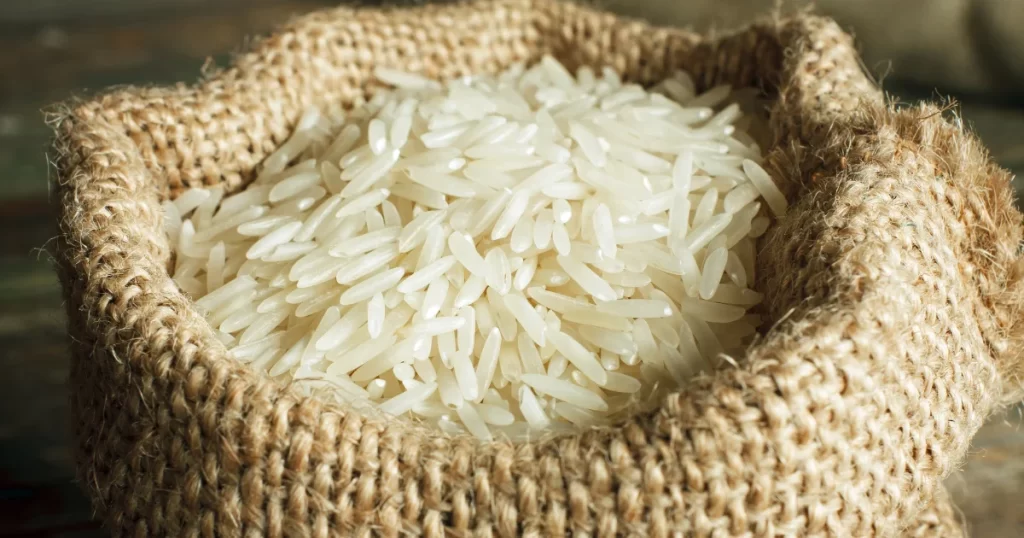
???? New Kainat Rice Price کائنات چاول کی قیمت????
| City | ????Minimum Price (40 Kg Rice) | ????Maximum Price (40 Kg Rice) |
|---|---|---|
| Bahawalnagar (بہاولنگر) | 8,300 PKR | 9,700 PKR |
| Bahawalpur (بہاولپور) | 8,500 PKR | 9,900 PKR |
| Chichawatni (چیچہ وطنی) | 8,550 PKR | 9,900 PKR |
| Faisalabad (فیصل آباد) | 8,500 PKR | 9,900 PKR |
| Gujranwala (گوجرانوالہ) | 8,300 PKR | 9,700 PKR |
| Hasilpur (حاصل پور) | 8,350 PKR | 9,800 PKR |
| Haroonabad (ہارون آباد) | 8,300 PKR | 9,800 PKR |
| Kamoke (کامونکی) | 8,300 PKR | 9,700 PKR |
| Khairpur (خیر پور) | 8,500 PKR | 9,950 PKR |
| Lahore (لاہور) | 8,600 PKR | 10,000 PKR |
| Multan (ملتان) | 8,500 PKR | 9,900 PKR |
| Gujrawala (گوجرانوالہ) | 8,300 PKR | 9,700 PKR |
| Okara (اوکاڑہ) | 8,700 PKR | 10,000 PKR |
| Peshawar (پشاور) | 8,400 PKR | 9,900 PKR |
| Sargodha (سرگودھا) | 8,400 PKR | 9,800 PKR |
| Sahiwal (ساہیوال) | 8,300 PKR | 9,800 PKR |
| Layya (لیہ) | 8,450 PKR | 9,800 PKR |
| Yazman (یزمان) | 8,300 PKR | 9,800 PKR |
Rice Varieties Cultivated in Pakistan
Pakistan is known for cultivating various rice varieties, each with its unique characteristics and uses. In above we discuss today rice price in Pakistan and now we discuss different types of rice that cultivated in Pakistan. Some of the prominent rice varieties grown in the country include:
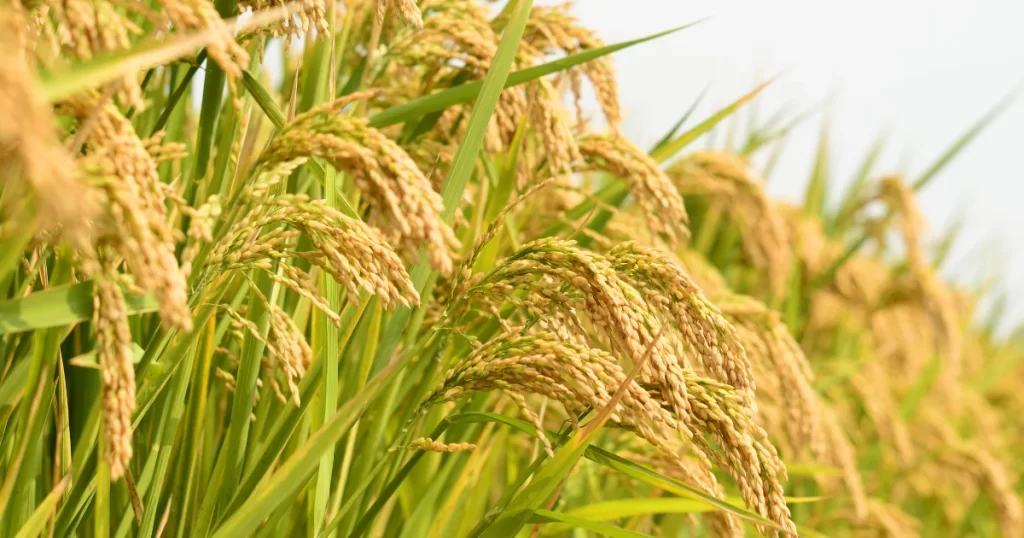
1. Basmati Rice
Basmati rice is a special type of rice known for its nice smell, long grains, and fluffy texture when cooked. It comes from India and Pakistan, and people love to use it in dishes like biryanis and pilafs because of its unique fragrance and taste. The rice grains stay separate after cooking, making it light and delicious in various recipes.
Basmati rice is the crown jewel of Pakistani rice varieties. Renowned for its long grains, enticing aroma, and delicate flavor, Basmati rice is highly sought after both domestically and internationally. The fertile plains of Punjab and Sindh provinces provide ideal conditions for growing Basmati rice. Varieties like Super Basmati and Basmati 385 are popular choices among farmers and consumers alike.
Today Rice Price in Pakistan of Basmati starts from 10,500 Rs to 10,900 Rs.
Basmati Rice varieties
- Super Basmati
- Basmati 385
- Basmati 370
- Basmati 2000
- Basmati 515
- Basmati 198
- Basmati 370
- Basmati 386
- Basmati 1121
- Basmati 515
2. IRRI Varieties
The International Rice Research Institute (IRRI) has played a pivotal role in developing rice varieties that are well-suited to the Pakistani climate. IRRI-6 and IRRI-9, among others, are known for their high yield potential and resistance to common rice diseases. Today rice price in Pakistan of IRRI varieties is less than Basmati due to it’s taste and use.
3. Non-Basmati Varieties
Apart from Basmati and IRRI varieties, Pakistan also cultivates non-Basmati rice. These varieties, such as KS-282 and KS-133, cater to diverse culinary preferences and are commonly used in traditional dishes like Biryani and Pulao.
Non-Basmati rice refers to any variety of rice that doesn’t belong to the Basmati category. Basmati rice is a specific type known for its long grains, distinct aroma, and fluffy texture when cooked. In contrast, Non-Basmati rice includes various other types of rice with different grain lengths, textures, and aromas. Non-Basmati rice is commonly grown and consumed worldwide, and its characteristics can vary depending on the specific variety. Today rice price in Pakistan of Non-Basmati varieties also less as compared to Basmati Rice.
Top 10 Rice Producing Countries
As of my last knowledge update in January 2022, I can provide you with information on the top rice-producing countries at that time. Please note that these rankings may have changed since then. As of 2022, the top rice-producing countries were:
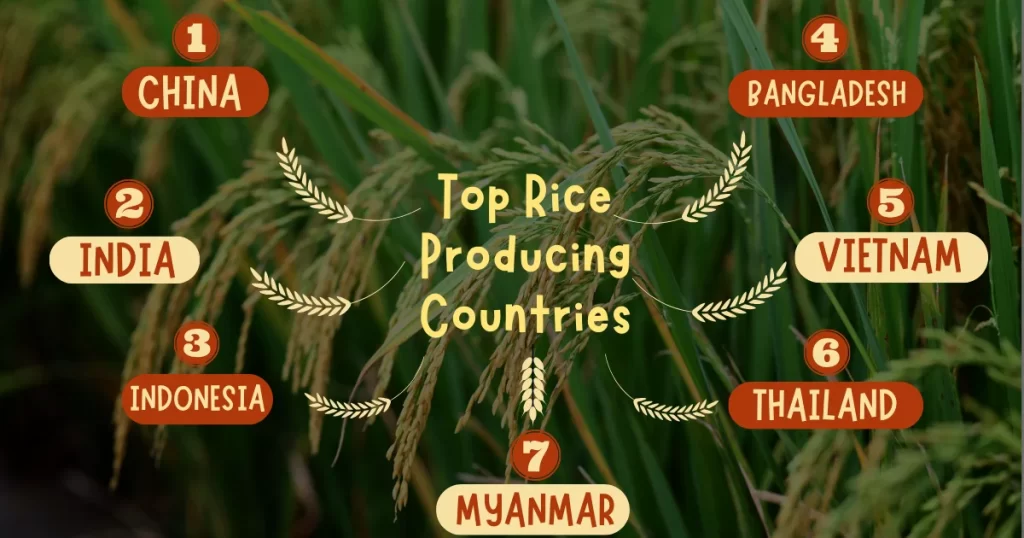
- China: China has consistently been the world’s largest producer of rice. Its vast agricultural land and favorable climate contribute to its significant rice output.
- India: India is another major player in global rice production. The country has a rich tradition of rice cultivation and is a crucial contributor to the world’s rice supply.
- Indonesia: Indonesia has emerged as a significant rice producer, thanks to its extensive rice cultivation areas and favorable climate conditions.
- Bangladesh: With a large portion of its population relying on agriculture, Bangladesh is a key rice-producing nation in Asia.
- Vietnam: Vietnam has steadily increased its rice production and exports, making it one of the leading rice-producing countries globally.
- Thailand: Thailand has long been a major player in the global rice market, known for its high-quality rice varieties and substantial production.
- Myanmar: Myanmar has a strong agricultural sector, and rice is a staple crop, contributing significantly to the country’s overall agricultural output.
- Philippines: The Philippines is a notable rice producer in Southeast Asia, with rice being a staple food in the country.
- Brazil: Brazil has become a significant player in global rice production, with favorable climatic conditions in certain regions supporting extensive cultivation.
- Japan: Although Japan’s rice production is not as extensive as some other countries, it remains a significant contributor to the global rice market, and rice is an essential part of the country’s diet.
These rankings are subject to change, and it’s advisable to check more recent sources for the latest information on rice production by country.
Planting Rice: Timing and Methods
To achieve high yields of rice in Pakistan, proper planting techniques and timing are essential. Rice can be planted using either wetland or dryland methods, depending on the variety and availability of irrigation.

For irrigated or wetland rice, transplanting seedlings into flooded paddies typically produces the highest yields. Start seedlings in nursery beds 3 to 4 weeks before the onset of monsoon rains, usually in May or June. Once paddies have been flooded and seedlings are 6 to 8 inches tall, carefully uproot and transplant them at a spacing of 8 to 12 inches apart. Transplanting shocks the seedlings initially, so provide shade for the first week and adequate irrigation and fertilizer to help them recover.
For dryland or rainfed rice, direct seeding into dry soil is more common. Wait for the first monsoon rains in June or July, then broadcast or drill seeds at a high density. Once seedlings emerge, thin them to achieve a spacing of 4 to 6 inches. Rainfed rice depends entirely on monsoon rains, so the timing of planting is critical. Seeds that are planted too early may not germinate if rains are delayed, while late planting can reduce yields.
Popular high-yielding varieties for irrigated rice include Super Basmati, KS-282 and IRRI-6. For rainfed rice, try a drought-tolerant variety such as Sakrand, Rohi or Thal. Milling and cooking quality, as well as resistance to disease, are also important factors to consider when choosing a variety.
The price of rice in Pakistan varies depending on the type and quality. Super Basmati and other fine varieties typically sell for a higher price, from 60 to over 100 rupees per kilogram, while coarse varieties may sell for 20 to 50 rupees per kilogram. By following recommended planting techniques for your selected rice variety, you can achieve optimal yields and get the best price for your crop.
Caring for Your Rice Crop
To get the best yields from your rice crop, providing good care and maintenance is key.
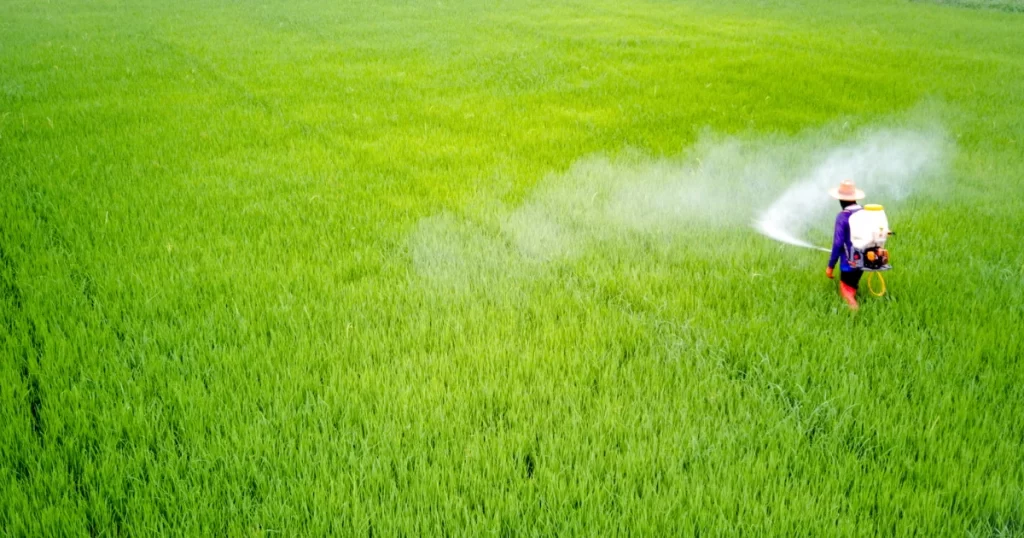
Water Management
Rice needs flooded conditions to grow, so make sure the field is properly irrigated. Allow 2-3 inches of standing water in the field during the vegetative stage, and 3-5 inches during flowering and grain filling. The water helps control weeds, provides nutrients, and maintains an even temperature around the plant.
- Monitor water levels regularly and reflood as needed after rain or irrigation. Stagnant, depleted water can stress the plants.
- Use flood irrigation, sprinklers, or drip irrigation to water the field. Flood irrigation, where water is pumped or flowed into channels in the field, is most common for rice.
- Drain the field before harvest to allow the soil to firm up and the plants to dry out. This usually takes 7-14 days.
Fertilizing
- Apply nitrogen fertilizer 2-3 times: once before flooding, again at 4-6 weeks after planting, and possibly again at flowering.
- Follow recommendations based on soil tests for how much nitrogen, phosphorus, and potassium to apply. Balanced fertilizers with some of each, like 15-15-15, are good for rice.
- Fertilizer can be broadcast by hand or machine before flooding, or applied directly to the flood water. Either way, it’s important to get the right amounts of nutrients to your crop.
- Zinc and iron deficiencies can also occur in rice. Foliar sprays or soil applications may be needed to correct these.
Pest and Disease Control
- Scout your field regularly for common rice pests like rice water weevil, rice stink bug, and rice leaf folder. Look for damage to leaves and seeds.
- Fungi like blast, sheath blight, and brown spot can infect rice. Apply fungicides, especially at heading and flowering, to control disease outbreaks.
- Herbicides can be used before flooding to control weeds. Once flooded, the water will help suppress additional weeds.
- Rodents like rats can damage young rice seedlings. Use traps or baits to control rodent populations before planting.
Following these tips will help you have a successful rice harvest with high yields. Paying close attention to your crop and providing what it needs throughout the growing season is the key to maximizing your production.
Harvesting and Processing Rice in Pakistan
Once the rice has matured, it’s time for harvesting. In Pakistan, rice is usually harvested by hand using sickles. Here are the basic steps for harvesting and processing your rice crop:
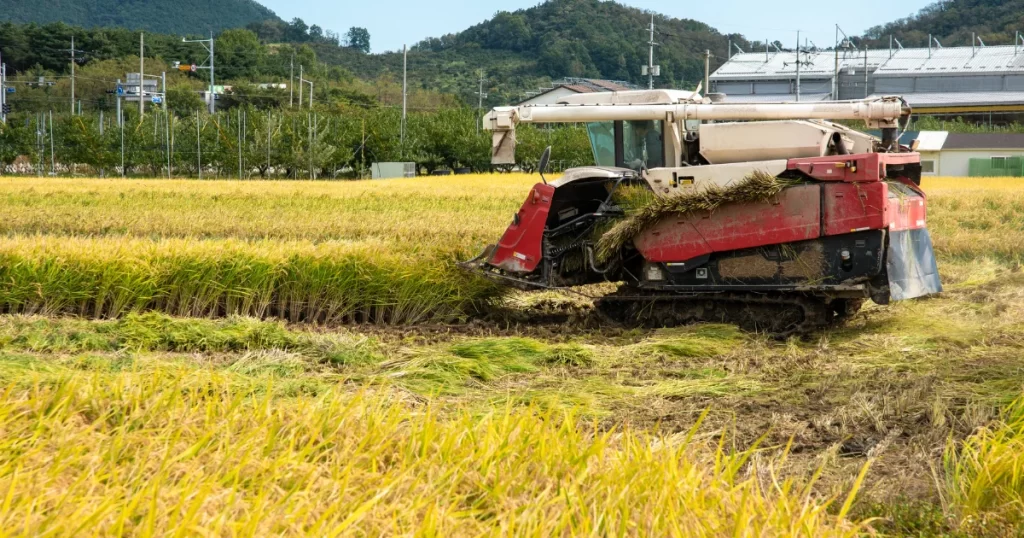
Harvesting
The rice is ready to harvest when the grains turn golden and the plants turn brown. At this point, the rice grains should be firm and hard when squeezed between your fingers.
Cut the rice plants a few inches below the panicles (rice seed heads) using a sickle. Gather several plants together into bundles for drying.
Drying
The rice bundles need to dry completely to allow the grains to harden and moisture levels to drop. This usually takes 3 to 7 days. Spread the bundles out on the ground in a single layer in direct sunlight. Turn the bundles over after a couple of days. The rice is dry when the grains become hard and the husks turn golden brown.
Threshing
Once dried, the rice needs to be threshed to separate the grains from the stalks. Traditionally, rice farmers in Pakistan beat the dried bundles against the ground or drag them through a machine to loosen the grains. Then they toss the bundle into the air to allow the wind to blow away the chaff, leaving the grains behind. More commonly now, mechanical threshers are used to efficiently thresh large amounts of rice.
Processing
The final step is to process the threshed rice to make the grains ready for cooking or storage. The rice is usually milled to remove the outer husks and bran layers. Polishing the rice further removes the bran layer to produce white rice. The rice can then be graded and sorted according to grain size and quality before being packed for sale or storage. Following these harvesting and processing techniques carefully will help you achieve maximum yields of high-quality rice from your crop. With good management, rice farming in Pakistan can be a profitable business.
Conclusion:
In this article we discussed about today rice price in Pakistan. We update daily Rice price. We talked about different varieties of rice. We discussed briefly about rice crop farming and harvesting. This article actual reason is to farmers remain updated about Today rice price in Pakistan.

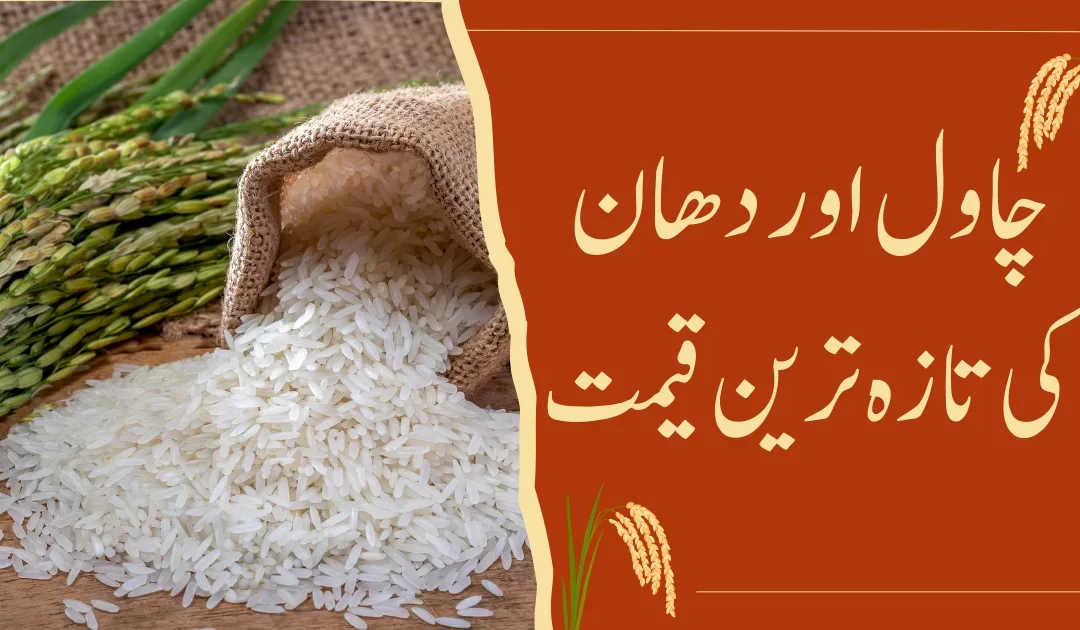
I want to start my own rice business. I want to get list all quality with the price.